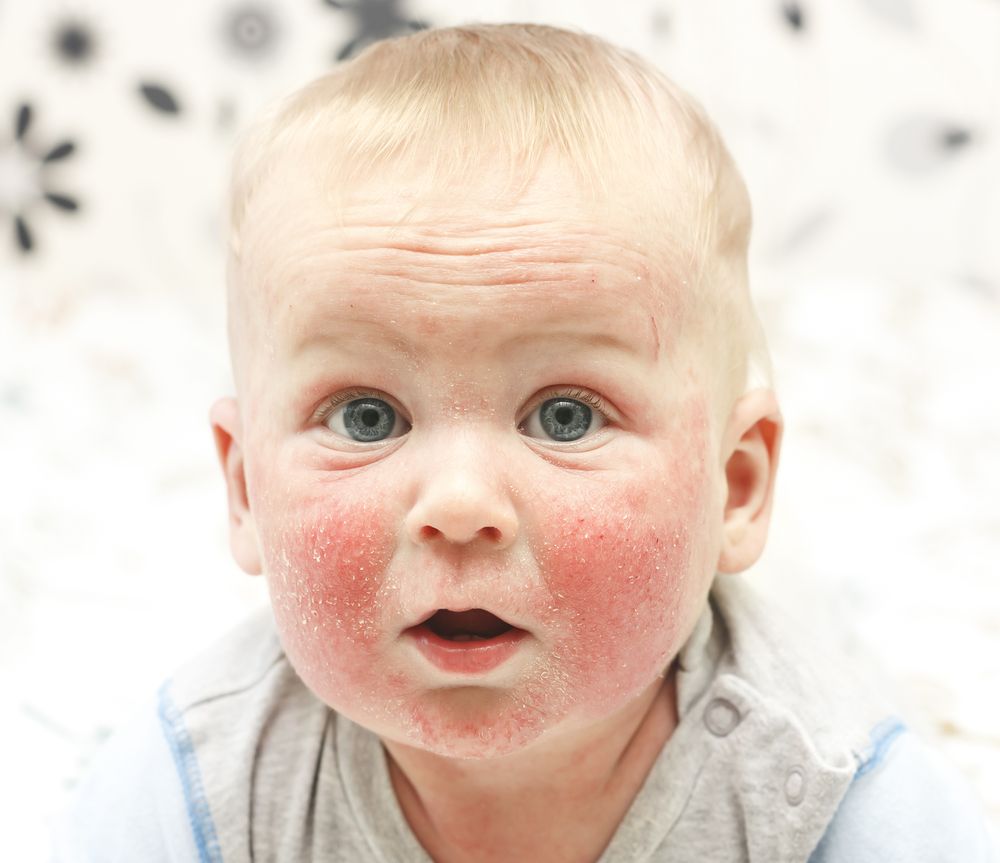Asthma and Food Allergies Predictable at Age One
This study sheds light on the interactive effects of atopic dermatitis and early allergic sensitization, and may help you predict which children may develop asthma and food allergies.
©Skylines / Shutterstock.com

New research can help you predict which children may develop asthma and allergies.
Certain genetic variants are known risk factors for allergy, but genotyping is not widely used in clinical practice. Now a method has been developed to identify children at who are risk for asthma and food allergies as early as their first birthday.
A new study shows that children at 1 year old who have eczema or atopic dermatitis and who are sensitized to an allergen are 7 times more likely than other infants to develop asthma, and significantly more likely to have a food allergy by age 3.
The researchers published their results November 1, 2017 in The Journal of Allergy and Clinical Immunology.
Infants with eczema or atopic dermatitis are more likely to develop asthma and allergic rhinitis in later childhood, a progression known as atopic march. However, predicting precisely which children with atopic dermatitis will go on to develop these conditions has been difficult.
“Over the years, the clinical community has struggled to explain the atopic march,” said Malcolm Sears, MD, founding director of the Canadian Healthy Infant Longitudinal Development Study (CHILD) Study and Professor of Medicine at McMaster University.
“These findings help us to understand the interactive effects of atopic dermatitis and early allergic sensitization on the risk of asthma and food allergy, and show that in combination they pose a significant risk for future allergic disease.”
Sears and colleagues used data from 2,311 children participating in The CHILD Study to investigate whether concomitant allergic sensitization enhances subsequent development of these allergic diseases at age 3 years. The CHILD Study is a birth cohort study headquartered at McMaster University that is collecting a vast range of health, lifestyle and environmental exposure information from 3,500 mothers and children from pregnancy to age 5 years and beyond.
Children completed skin prick testing at age 1 year and were considered sensitized if they produced a wheal 2 mm or larger than that elicited by the negative control to any of 10 inhalant or food allergens. Children were also assessed for atopic dermatitis. At age 3 years, they were assessed for asthma, allergic rhinitis, food allergy, and atopic dermatitis.
After adjusting for common confounders, the researchers found that atopic dermatitis without allergic sensitization was not associated with an increased risk of asthma at age 3 years. However, those children with atopic dermatitis with allergic sensitization had more than a 7-fold increased risk of asthma.
Atopic dermatitis and allergic sensitization had significant interactions on both additive and multiplicative scales in association with asthma risk. There was also a positive association of food allergy risk and the interaction between atopic dermatitis and allergic sensitization.
“Much of what happens to us later in life is related to the exposures we encounter in early childhood,” said Sears. He noted that a previous CHILD study showed that children who avoid cow’s milk products, egg, and peanut during the first year of life are at increased risk of allergic sensitization to these foods later on. Early introduction to these foods promotes tolerance and reduces the risk of food sensitization and food allergy.